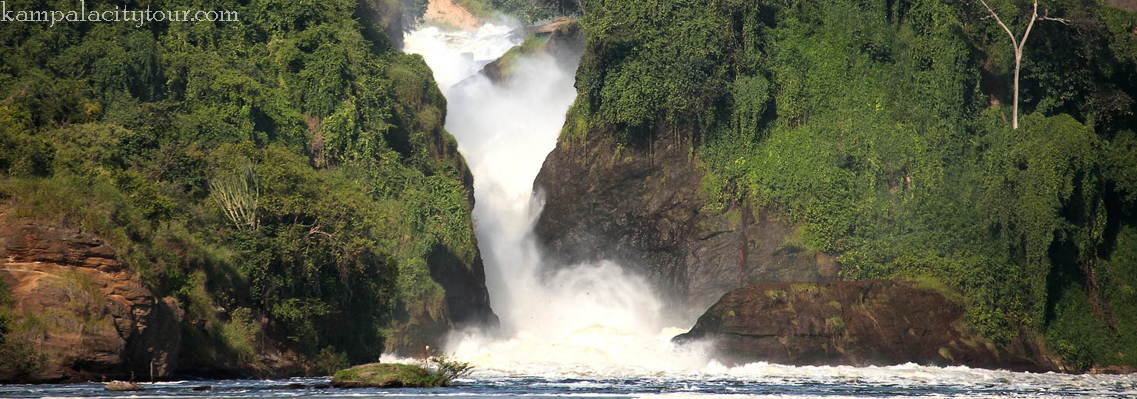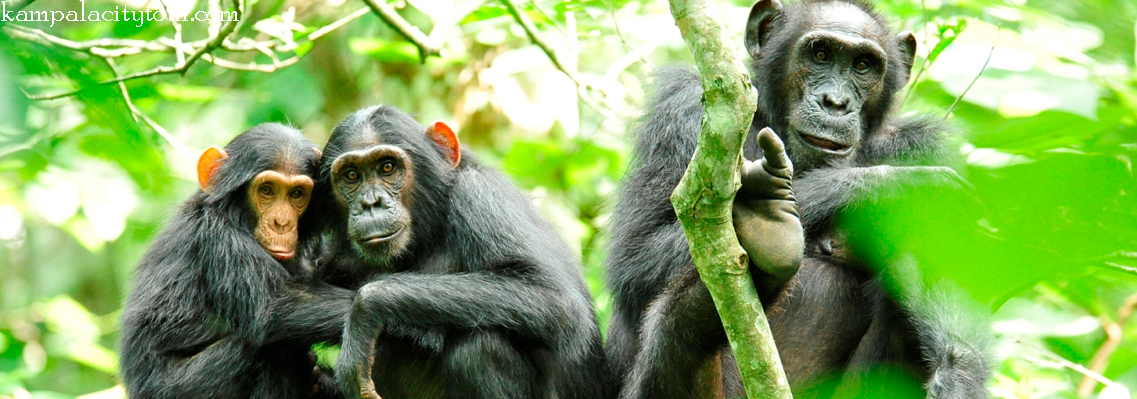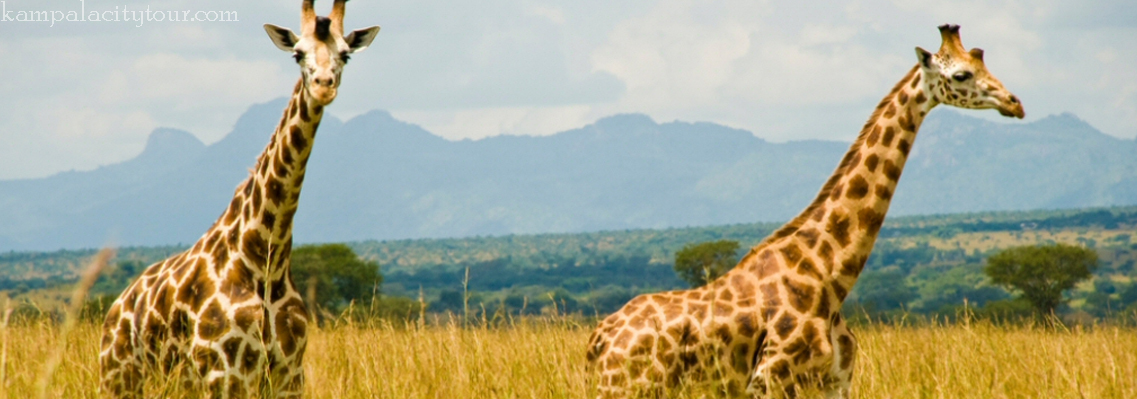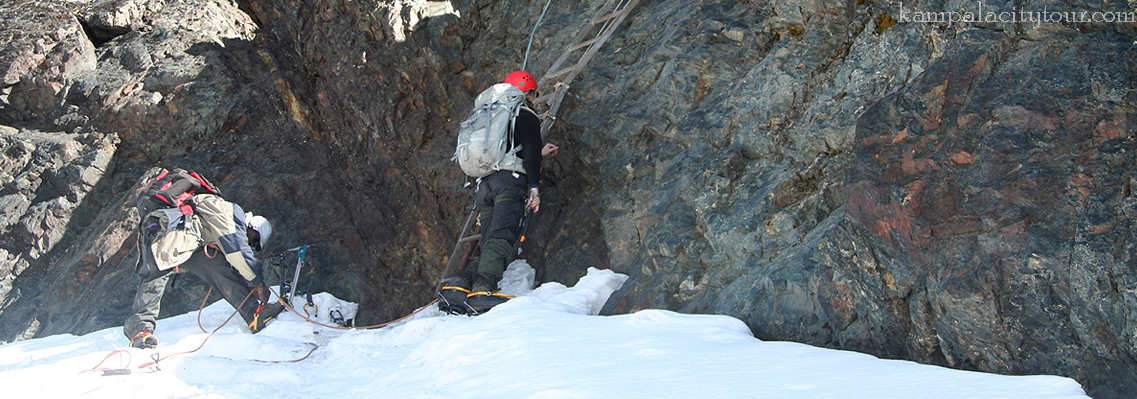National Parks
Bwindi Impenetrable National Park

Bwindi Impenetrable National Park settles in the south west of Uganda stretching over an area of 321 km2 with an altitudinal range of 1,160 – 2,607 Km above sea level. This gorilla safari park extends for 32,092 ha and is among the largest areas in East Africa with Afro montane lowland forest with greatest number of trees at its altitude more than any other similar forest in East Africa. Bwindi Impenetrable National Park is by no means ordinary when it comes to bio-diversity concentration with great counts of trees, wildlife, butterflies and great mammal congregations in Africa. The Park is known for populations of Mountain gorillas which are listed as critically endangered by IUCN. Bwindi Impenetrable National Park is considered to in a grouping of the most diverse forest on African continent with 163 species of trees, 104 species of fern alongside other taxa. 16 of these species are restricted to forests of western Uganda and one Lovoa swynnertonii is considered to be threatened globally. The park also has 214 species of birds, 7 species of diurnal primates, 120 species of mammals and 202 species of butterflies. The dense undergrowth coupled with mature tropical trees settling on a rugged landscapes combine to justify Bwindi as an Impenetrable forest. Bwindi Impenetrable National Park is also considered to have counts of African montane wildlife most of which is endemic to the highlands of the Albertine rift. In fact, nine species that are threatened globally exist in Bwindi including; common chimpanzee, mountain gorilla, l'Hoest's monkey Cercopithecus l'hoesti, endangered species of African giant swallowtail, African green broadbill, Grauer's rush warbler, Chaplin's flycatcher, African elephant and cream-banded swallowtail. The leopard and buffalo were poached to extinction of recent and in 1960s respectively.
Accommodation: Buhoma Community Rest Camp, Bwindi View Bandas, Silverback lodge, Mahogany Springs Lodge, Buhoma Lodge, Sanctuary Gorilla Forest Camp, Broad bill Forest Camp, Gorilla Mist Camp, Ruhija Gorilla Safari Lodge, Trekkers Tavern Cottages, Bakiga Lodge, Gorilla Valley Lodge, Wagtail Eco Safari Camp, Chameleon Hill Lodge, Nkuringo Gorilla Camp, Clouds Mount Gorilla View Lodge, Gorilla Village Lodge, Nshongyi Gorilla Resort, Nshongi Camp, Engagi Lodge and Lake Kitandara Bwindi Camp.
Queen Elizabeth National Park:

First established as Kazinga National Park in 1952, Queen Elizabeth National Park is situated in the west of Uganda nearing the Rwenzori Mountains with snowcapped peaks towering at 5,109m above sea level. The National Park of Queen Elizabeth covers a cross section of the western rift valley floor stretching for1, 978km2 land coverage. Queen Elizabeth National Park is currently the most visited park in Uganda and is listed as a world biosphere reserve. It has rich biodiversity concentration with 95 species of mammals, 600 species of birds which makes it the first in Uganda regarding the bird populations, ten (10) species of primate and 20 predator species. Queen Elizabeth is also a habitat for the tree climbing lions dwelling in its sector of Ishasha, the famous Kazinga channel stretching to 45km long connecting Lake Edward and Lake George, the amazing Kyambura gorge with counts of Chimpanzees not forgetting the range of explosion craters some of which are salty lakes while others contain sulphur. This conglomerate to make Queen Elizabeth National Park an ideal destination that can be encountered while on safari in Uganda.
The Park shares the districts of Bushenyi, Kasese, Rukungiri and Kamwenge and is 417km approximately 7 hours of surface drive west of Kampala. Kasese town in the north is the nearby town to the park while Bushenyi is also a few Kilometers to the south. The Park which was first named Kazinga National Park changed its name in 1954 to honor the visitation of the Royal Queen of England and was named Queen Elizabeth National Park. The platform where the Queen stood still exists and is named the Queen’s Pavilion. Queen Elizabeth National Park also extends to incorporate the mature rain forest of maramagambo with great lush canopy with concentrations of bio-diversity.
Accommodation: Mweya Safari Lodge, Kyambura Game Lodge, Enganzi Lodge, Marafiki Safari Lodge, Katara Lodge, Ihamba Safari Lodge, Pumba Safari Cottages, Kazinga Channel View Resort, Bush Lodge, Volcanoes Kyambura Gorge Lodge, Kingfisher Lodge, Hippo Hill Lodge, Jacana Lodge, Ishasha Wilderness Camp, Ishasha Jungle Lodge, Simba Safari Camp and Mweya Hostel.
Murchison Falls National Park

Murchison Falls National Park was established in 1952 and it is Uganda’s largest national park. Located in the north west of Uganda at the tip of the western rift valley also known as the Albertine rift, Murchison Falls National Park is in a distance of 311km about 5 hours’ surface drive from the city of Kampala. The national Park covers a surface landscape of 3,440km2 while the wider Murchison Conservation Area which embeds Karuma and Bugungu wildlife reserves combine to cover 5,308km2. . The Murchison Falls National Park is closer to Masindi town 85km about 2- 3 hours’ of surface drive. The Park is bisected by the River Nile which is the longest river in the world as it makes its way from Lake Victoria to Mediterranean Sea leaving a natural wonder famously known as Murchison falls which is the most powerful waterfall in the whole world. The feature derives its nomenclature after Sir Roderick Murchison who was the president of the Royal geographical society at the time of its discovery by Sir Samuel Baker. This feature is among the hotspots in Murchison National Park thus should not be missed while on safari in Uganda as it squeezes its self to make the way through an 8m ravine before plummeting 43m below to what has been termed as the devils cauldron forming a plume of spray surrounded by a thunderous roar and marked by a trade mark rainbow. Besides, the Murchison Falls, the park is a habitat for big five of the land animals except the Rhinos that dwell in the adjacent Ziwa Rhino sanctuary 135km 2 – 3 hours’ drive pending re-introduction after they got extinct in 1983. Among the Big five present include; the lion, leopard, elephant and buffalo. Other wildlife species include giraffe, Jackson’s Hartebeest, Uganda Kob, Waterbuck, bushbuck, oribi among others. The Murchison Falls National Park is standing at an elevation of 619m and 1,292m qualifying it as low-lying considering the geography of Uganda. This largest savannah park is the second most visited in Uganda after the National Park of Queen Elizabeth. The park’s average rainfall is 1,085mm which relatively low in comparison with the rain forest protected areas of south western Uganda though it is with in the same range with other savannah protected areas of East Africa. The Murchison Falls National Park is marked by rolling savannah combretum with patches of borassus palms, acacia woodland and riverine vegetation along the banks of River Nile. The southern sector of the park is more forested with thicket for example there is Rabongo forest which has got a closed forest canopy. Murchison Falls National Park has 76 mammal species that include; bushbuck, defassa buck, bohor reedbuck, side-striped jackal, warthog, and oribis not forgetting vervet monkeys and olive baboon. The rolling savannah plains of Murchison are ideal for spotted hyena, leopard and the localized patas monkey. The Rabongo forest shelters populations of chimpanzees, black and white colobus and other primates. The park also contains 460 species of birds with other 19 species unconfirmed. The banks of Nile River contain the rare and endangered shoe bill stork between the Nile Safari Camp and Lake Albert estuary. The species of raptors counting to 53 species have been recorded.
Accommodation: Paraa Safari Lodge, Chobe Safari Lodge, Murchison River Lodge, Pakuba Safari Lodge, Sambiya River Lodge, Nile Safari Lodge, Heritage Safari Lodge, Bwana Tembo Safari Camp, Fort Murchison, Yebo Safari Camp, Red Chili Rest Camp, Geo Lodges Shoebill Camp site and UWA Campsite.
Kibale National Park:

This is positioned in the west of Uganda in the districts of Kabarole and Kamwenge which 358km from Kampala the country’s capital. Kibale National Park covers 795km2 of land surface and is among the few remaining mature tropical forests in Uganda. The park shelters 351 tree species with tree species that are 200 years old and 50m in height. Besides trees, Kibale National Park also contain 70 species of mammals, 13 species of primate including the common chimpanzees and 375 bird species all of which can be explored while on Uganda safaris. Kibale National Park was first gazette in 1932 as a forest reserve but in 1993, the area was up graded to park status and the management was transferred from National Forestry Authority to Uganda Wildlife Authority. The park has a forest neck that continues south wards to adjoin Queen Elizabeth National Park forming a wildlife corridor that stretches for 180 km. Kibale National Park is a famous ecological environ ideal for educational research and leisure encounters no wonder it is where the Makerere University Biological Field Station (MUBFS) is located. Its environs are occupied by the Batooro natives and the Bakiga who migrated into the area following heavy population in their traditional Kigezi region.
Kibale National Forest contains the great primate concentration on the African continent which includes the common chimpanzees, red colobus monkey, L'Hoest’s monkey, Mangabey (Lophocebus ugandae), black colobus (Colobus satanas) and the blue monkey (Cercopithecus mitis) among others. Kibale National Park also has forest elephants that sometimes connect to Queen Elizabeth through the 180km wildlife corridor, buffaloes, bush pigs, red and blue duikers. Carnivores like bush pigs, leopards, two species of otter and three species of duiker also thrive in the park. The Lions also are known for paying occasional visits to the park. Kibale National Park also has 375 bird species including the olive long-tailed cuckoo, Western Green tinker bird, African Grey Parrot and two pitta species (African and Green-breasted). The ground thrush (Turdus kibalensis) is restricted in range to Kibale National Park. This can be explored on Uganda safari.
Accommodation: Primate Lodge, Kyaninga Lodge, Ndali Lodge, Chimpanzee Forest Guesthouse, Kibale Forest Camp, Safari Hotel Bigodi, Chimps Nest, Kanyanchu River Camp, Kibale Safari Lodge, Rwenzori View Guesthouse, Mountains of the Moon Hotel, Sebitoli Camping ground, Lake Nkuruba Nature Reserve, Crater Valley Kibale (CVK) Resort and Nyinabulitwa Resort & Safari Camp.
Lake Mburo National Park

Positioned in Nyabushozi county, Kiruhura District 240km from Kampala the Uganda’s capital city and 45km from Mbarara, the largest town in the sub region, Lake Mburo National Park covers 260km2 marked by expanse of open savannah landscape though it has been heavily invaded by dense thicket due to absence of taming wildlife like elephants in the park. The Park shares five lakes in the region with Lake Mburo fully located within its boundaries. The hills of the park are marked by protruding ancient Precambrian rocks that have existed in the area for over 500 million years ago with great cultural and legendary connotation to the traditions of the local inhabitants. Lake Mburo National Park has got great counts of fauna including the Impala which is endemic to the park on Uganda safaris. The Park also has the highest zebra concentrations far from Kidepo and Pian Upe the only protected areas where Zebras thrive in Uganda. Besides that, it also has populations of buffaloes, topis, elands – the second largest antelope in the world after Roan antelope which also existed in the park but got extinct, defassa waterbuck, bush buck, reedbuck, Klipspringer and warthogs among others. The Park also contains predators like leopards, serval cat, and spotted hyena among others. The waters of Lake Mburo support concentrations of Hippos. Besides animals, the park also has concentrations of birds. They count to 350 species including the rare Red faced Barbet which is endemic to the park.
Accommodation: Mihingo Safari Lodge, Mantana Luxury Tented Camp, Lake Mburo Safari Lodge, Arcadia Cottages Mburo, Rwakobo Rock, Eagles Nest, Rwonyo Rest camp and Conservation Education Center.
Kidepo Valley National Park

Located in the north eastern part of Uganda, Kidepo Valley National Park covers a geographical landscape of 1,442km2. It is in the district of Kaboong about 220km from Moroto the biggest town in the sub region and 700km from Kampala the Uganda’s capital city. Kidepo Valley National Park was established in the year 1962 and it contains 77 species of mammals, 475 bird species of which 60 are endemic to the park on the standards of Uganda. The park also has five primate species, 20 species of predator some of which are restricted to Kidepo on Ugandan standards including black-backed jackal, aardwolf, bat eared fox, cheetah caracal. Twelve (12) antelope species also thrive in the park of which some of them are endemic to Kidepo such as greater and lesser Kudu, Guenther’s dik-dik and mountain reedbuck. Kidepo National Park has other notable fauna such as lion, elephant, leopard, bush duiker and buffalo among other species. Kidepo National Park boarders south Sudan and overlooks the Kenyan boarder. The dodoth pastoralists and indigenous Karimojong were the former dwellers of this area before it was established as a game reserve in 1958. They apparently thrive outside the park boundaries. As a result of its distance from the country’s capital and the nature of the roads that connect to it, Kidepo has remained remote and less explored compared to other Uganda safari parks.
Accommodation: Apoka Safari Lodge, Nga’moru Wilderness, Apoka Rest Camp, Kakine self-catering campsite.
Semuliki National Park

Semuliki National Park was established in 1993 covering an area of 220km2 in Bwamba county, Bundibugyo district west of Uganda. The park is a bio- diversity hot spot with 441bird species and 53 species of mammals. The National park of Semuliki stretches across the Semuliki valley overlooking the magical mountains of the moon – the Ruwenzori. Its dense forest is an extension of the great Congo Ituri forest which adjoins the rainforests of central Africa. It is one of the pre-historic forests that survived the last ice age 12 - 18,000 years ago enabling it to join the club of diverse and intact ancient forest tract in Africa. The forest setting of Semuliki National Park draws much attachment to the central African forests unlike those of east Africa. The ecological set up and the species of flora including trees like West African oil palms, the alignment of River Semuliki which resembles that of River Congo, the fauna which have connotation to Central Africa like forest elephants while the pygmy people are traditional inhabitants of the ituri forest. This justifies Semliki’s connotation to Central African ecology. This enables a traveller on Uganda safari to have a chance of encountering the central African setting while in East Africa once him / her visits Semuliki National Park. Semuliki National Park is famously known for its Sempaya hot springs with the female and male hot springs whose formation dates back to 25,000 years ago when the older volcanic processes were at work following powerful subterranean forces that have molded the rift valley for 14 million years past.
Accommodation: Semuliki Safari Lodge and Kirumia Guesthouse.
Mount Elgon National Park

Spreading to over 1,121km2 of land, Mount Elgon National Park lies with in the eastern side of Uganda close to Kenyan boarder 255km from Kampala which is the country’s capital city. Mount Elgon which was once the tallest in Africa before it was eroded to being the fourth tallest in East Africa rises up to 4,321m above sea level and is the oldest and largest single standing volcano in East Africa having last erupted approximately 24 million years ago. The Elgon Mountain has got the largest intact mountain caldera in the whole world which stretches up to 42km2 and the largest volcanic base in the world which extends to 4,000km2. Mount Elgon National Park has gone through various protected area statuses before gaining its current stand. It was first established in 1929 as a forest reserve and then as a crown forest and central forest reserve in 1940 and 1951 respectively. In 1993, the protected area was elevated a national park status. It was degazetted in 1983 to settle the landless communities that had encroached on it thus losing 6,000ha and at the time of its gazettion as a national park in 1993, more 1500ha had been encroached upon.
The park is surrounded by the Bagisu and Sabiny and the Ndorobo people who live in the forest of Benet. The Bagisu have got great cultural attachment to Mount Elgon which is referred to as Mount Masaba in the local dialect of which they believe that their founding father – Masaba originated from. Mount Elgon is water shed forming the source of so many rivers and streams which are intercepted by basalt cliffs which have positioned themselves as impermeable leading to formation of a range of water falls. The park also has beautiful species of flora along with other unique geological features like caves, gorges, cliffs, hot springs among other features.
Accommodation: Mbale Resort Hotel, Mount Elgon Hotel, Sipi River Lodge, Crown nest Camp site, Suam Guesthouse, Kapkwata Guesthouse, Masha Hotel, Noah’s Ark Hotel, Savannah Guesthouse, Twilight Campsite, Lacam Lodge, Moses Campsite and Sipi falls Resort.
Mgahinga National Park:

Gazetted as a national park in 1991, Mgahinga National Park has a geographical coverage of 33.7 km2 which makes the smallest national park in Uganda. The park is a second refigium for the world’s critically endangered mountain gorillas in Uganda with one habituated gorilla family named Nyakagyezi usually encountered on Uganda gorilla trekking safaris. Besides mountain gorillas, Mgahinga National Park also shelters populations of golden monkeys which only exist in the Virunga massif on the world scale. The park was initially an ancient dwelling of the forest people the pygmies who inhabited the forests with Garama cave as the palace for their King and a congregator area for all Batwa in times of festivals before these people were evicted to stay around the forest environs. Mgahinga National Park also has three of the eight volcanoes that form the greater Virunga massif including Mount Muhabura, Mount Gahinga and Mount Sabyinyo. The protected area is 14km from south of Kisoro town and 519km from Kampala the country’s capital. It is located in the county of Bufumbira, Kisoro District.
Accommodation: Volcanoes Mount Gahinga Lodge, Mucha Hotel, Kisoro Tourist Hotel, Travellers Rest Kisoro, Countryside Guesthouse Kisoro and Amajambere iwacu Camp.
Rwenzori Mountains National Park

The Rwenzori Mountains had earlier been described by Ptolemy a Greek geographer in 150AD as Lunae Montes translated as the Mountains of the moon and were thought to be the origin of the Nile River which is the longest in world and one of the natural wonders encountered by Uganda safari undertakers. This earlier notification lured various explorers that followed to fall in mystery of these legendary mountains of the moon and in 1889 Henry Morton Stanley was overwhelmed when he saw this legendary feature while on his Uganda safari. Mount Rwenzori was established as a national park in 1991 covering an area of 996km2 and in 1994; it was given a world heritage site status by UNESCO. The Rwenzori Mountain is the Africa’s third highest peak after Mount Kilimanjaro and Mount Kenya all with in the Eastern region of Africa. Amazingly to note is that Mount Rwenzori peaks are covered by snow despite their closeness to the world main latitude – the equator. The mountain is noted among the challenging mountain ranges to climb in Africa by the African Travel Magazine and is the highest mountain range in Africa. The Rwenzori Mountains have got impressive glacial rivers like Nyamwamba and Mubuku that flow down the mountain slopes with very clear and clean water forming great scenic sights and natural water sources that that gives a real taste of the an African landscape. Mount Rwenzori National Park also contain 70 species of mammals, 217 bird species of which 19 are restricted to the Albertine endemics and with great deal of flora that thrive at varied altitudinal ranges such as the montane forest zone on the lower layers of the mountain, preceded by the bamboo zone, tree heath vegetation and Afro-alpine moorland zone. The 70% of the 99,600ha which form the Mount Ruwenzori area occur above 2,500m altitude. The Rwenzori Mountain has got six peaks with Margarita that rises up to 5,109m being the highest followed by Mt Speke (4,890m) Mt Baker (4,843m), Mt Emin (4,798m), Mt Gessi (4,715m) and Mt Luigi di Savoia (4,627m).
Accommodation: Equator Snow Lodge, Ihamba Safari Lodge, Ruboni Community Camp, Mihunga Safari Lodge.